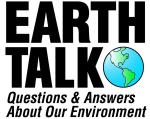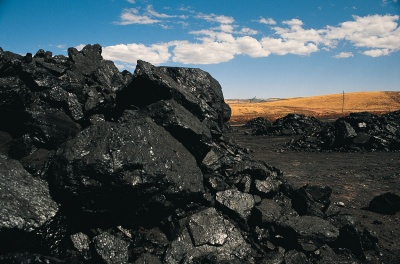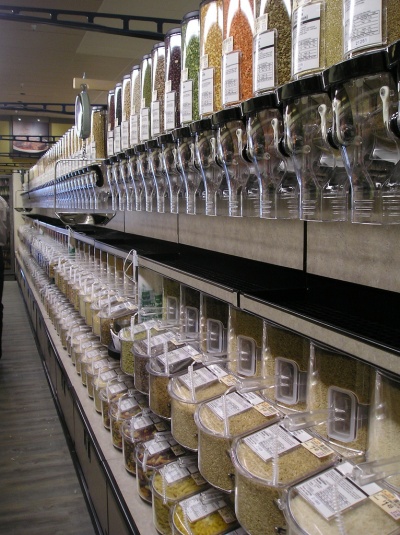 EARTH TALK: From the Editors of E/The Environmental Magazine
EARTH TALK: From the Editors of E/The Environmental Magazine
Dear EarthTalk: As I understand it, coal that is used to fuel power plants and other industrial activity is a key culprit in pollution and climate change. So what is "clean coal" and is it really? -- Matthew Oliver, Minneapolis, MN

Coal is our cheapest, most abundant—and dirtiest—fuel source. 'Clean coal' proponents want to purify and liquefy it for use in diesel-powered autos. But green groups say producing liquid coal pollutes more than petroleum-derived fuel and that using it in autos would be like 'turning a hybrid Prius into a Hummer. (Photo: Getty Images)
The term "clean coal" describes various processes that remove pollutants from coal, our cheapest, most abundant-and dirtiest-energy source. By reducing coal's environmental footprint through technological wizardry, the coal mining industry and the Bush administration hope to keep coal, which currently produces more than half of all U.S. electricity, a big part of our energy picture for many years to come.
Clean coal proponents also want to liquefy coal to turn it into a form of automotive fuel that, according to the industry-sponsored Coal-to-Liquids Coalition, costs less and burns cleaner in some ways than the traditional diesel fuel it could replace. Several members of Congress from coal states are keen on having the government subsidize the production of so-called liquid coal-which can be used anywhere diesel fuel currently goes-as a "homegrown" alternative to foreign oil. Industry analysts say there is enough coal in America to last hundreds of years, saving us untold expense and trouble obtaining regular petroleum from unfriendly foreign governments.
But major environmental groups, from the Sierra Club to the Natural Resources Defense Council, say that "clean coal" is anything but. The process involves heating coal to 1,000 degrees Fahrenheit and mixing it with water to produce a gas, then converting the gas into diesel fuel. Although the Coal-to-Liquids Coalition says that carbon dioxide emissions from the entire production cycle of liquid coal are "equal to, or slightly below, those of conventional petroleum-derived fuels," its claims are based on a single federal study, now six years old, that environmental leaders disagree with profoundly.
Jim Presswood, federal energy advocate of the Natural Resources Defense Council says, "Liquid CO2 emissions are twice as much as emissions from conventional petroleum-derived fuels." He says that even if CO2 emissions were captured as part of the process, at best liquid coal would be 12 percent worse than the gasoline equivalent. As some environmentalists have put it, liquid coal can turn any hybrid Prius into a Hummer.
The Washington Post editorialized, "To wean the U.S. off of just one million barrels of the 21 million barrels of crude oil consumed daily, an estimated 120 million tons of coal would need to be mined each year. The process requires vast amounts of water, particularly a concern in the parched West. And the price of a plant is estimated at $4 billion." Also, in recent years, particularly in Appalachia, mining companies have gone from simple excavation to blasting off the tops of mountains in an ecologically devastating process known as "mountain top removal."
For their part, greens acknowledge the importance of cleaning up coal and other dirty energy sources, but would rather see more funding devoted to researching, developing and implementing alternative and renewable energy sources that don't come with so much environmental baggage.
CONTACTS: Coal-to-Liquids Coalition, www.futurecoalfuels.org ; Sierra Club's "Stopping the Coal Rush," www.sierraclub.org/environmentallaw/coal .
Dear EarthTalk: Everybody says stop using plastic bags, but what about all the plastic, cellophane, cardboard and other materials used for packaging the food itself? What can we do to reduce how much of this unnecessary stuff comes wrapped around our food? -- Sunil Sreedharan, Mumbai, India

One way to reduce food packaging waste is to buy in bulk. Most natural foods stores have large bulk-buying sections, like the one pictured here, so you can haul away in large bags the equivalent of many containers of beans, pastas, rice or other staples. (Photo: mattieb, courtesy Flickr)
Yes, food packaging is a big problem in North America as well as elsewhere around the world, with landfills filling up and recyclers facing a glut of materials to process. It's hard to say just how much of the 130 million tons of paper, plastic and metals that get tossed or sorted for recycling in major U.S. cities is from food packaging, but the percentage is no doubt sizable. The main problem is in the psychology of marketing: Manufacturers know that products in big flashy-looking packages attract more buyers.
A 1994 European Union directive requires companies operating in its 27 member nations to take back and recycle (or otherwise deal with, taking the burden off of local communities) at least 60 percent of their packaging waste, including that used for food items. But no such "producer pays" laws, which provide incentive for manufacturers to cut back on waste to begin with, exist in the United States or Canada. As such, it falls to consumers to patronize stores and manufacturers that minimize packaging.
One way to take a bite out of packaging is to buy as much in bulk as your family can keep up with. It may take longer to get through that gigantic box of cereal you got at Costco, but think of all the cardboard and plastic your bulk purchase saved over buying several small boxes. Similarly, instead of sending the kids off to school every day with a new juice box in the lunch bag, how about a safe metal or plastic reusable, washable container that you can refill each morning from the gallon jug you keep in the fridge?
Another way to forego packaging is to reduce time spent in large supermarkets, where wasteful product packaging rules. Most natural foods stores have large bulk-buying sections so you can haul away in large paper or plastic bags the equivalent of many containers of beans, pastas, rice or other staples. Frequenting local farmers' markets-armed with your reusable shopping tote, of course-is another way to keep food packaging out of your home. The website Local Harvest offers a free searchable database of farms across the U.S. that run Community Supported Agriculture (CSA) programs and participate in farmers' markets.
It's worth noting that we tend to toss way too much food packaging where a quick rinse would make the same cans, jars and jugs useful storage containers or quality recycling fodder. Soup cans, for example, can easily be recycled into new steel and are collected universally by municipal recycling programs. And while you're buying soup, opt for the family size cans and save leftovers instead of buying single-serving containers. Even when packaging material is recyclable, there's no reason to waste it, as even recycling uses resources and costs money.
Beyond shopping and sorting more responsibly, individuals also have the power of their voices to pressure food makers to cut back on packaging. You can also try to persuade your elected officials to look into the feasibility of enacting "producer pays" laws in your community, city or state. And you can talk to co-workers, friends, relatives and others about the importance of buying in bulk and reducing waste.
CONTACTS: European Union Packaging and Packaging Waste Directive, http://europa.eu/scadplus/leg/en/lvb/l21207.htm; Local Harvest, www.localharvest.org .
RELATED INFORMATION:
Annapolis Seeks Ban on Plastic Bags, Oct. 25, 2007
http://somd.com/news/headlines/2007/6613.shtml
GOT AN ENVIRONMENTAL QUESTION? Send it to: EarthTalk, c/o E/The Environmental Magazine, P.O. Box 5098, Westport, CT 06881; or e-mail: earthtalk (at) emagazine.com.


